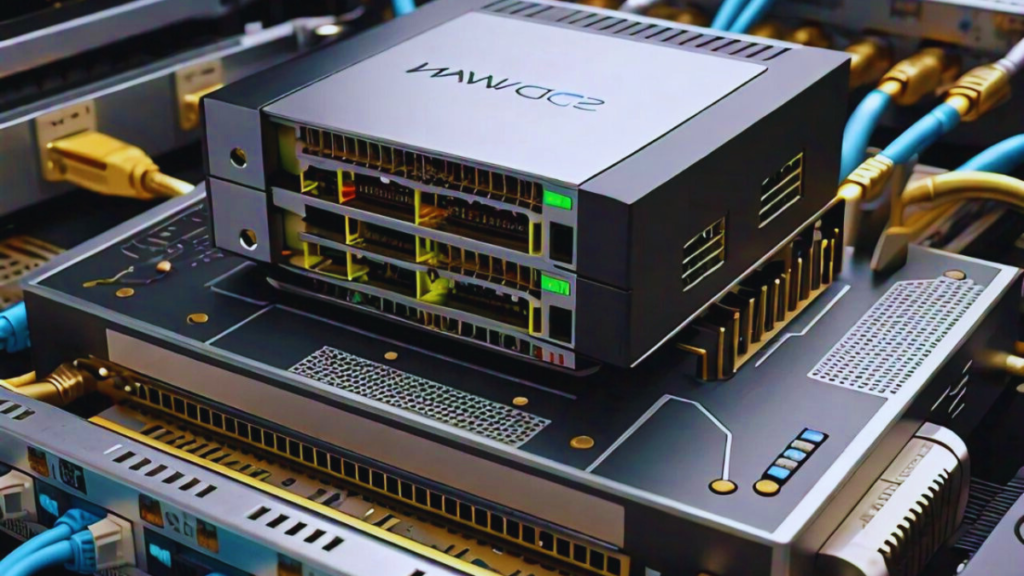Introduction to SD-WAN and Its Growing Importance
The emergence of software-defined wide area networks (SD-WAN) has transformed WAN administration, mainly because of enterprises’ increasing reliance on cloud services and remote employees. The many advantages SD-WAN offers over traditional WANs are made possible by its ability to streamline and simplify network operations. The SD-WAN implementation is an appealing option for enterprises trying to maximize their network infrastructure.
Network architecture is under unprecedented pressure due to the quick uptake of cloud-based services and apps. Traditional WANs often need to be equipped to handle this evolving landscape, making SD-WAN an essential component for modern enterprises. As businesses grow, agility and efficiency in network management become paramount, and SD-WAN seamlessly fits into this new paradigm by offering dynamic path control, robust security, and simplified management. Not only does SD-WAN address performance issues, but it also enables businesses to be more responsive to market changes and customer demands.
Intelligent Path Selection
One of the standout features of SD-WAN is its ability to optimize network performance through intelligent path selection. Traditional WANs often rely on fixed, static routing protocols that can be inefficient and lead to congestion. In contrast, continually evaluates the best path for data traffic in real time, considering latency, jitter, and packet loss factors. Doing so ensures that network performance remains optimal, even during peak traffic times. Businesses have reported up to a 50% increase in network performance after implementing SD-WAN. This increase can be attributed to the dynamic rerouting capabilities that allow for immediate adjustments based on network conditions, thereby preventing bottlenecks and ensuring smoother data flow. Such capabilities are critical for businesses relying on real-time data processing and communication, ensuring operations run smoothly and efficiently.
Enhanced Security
A network deployment’s security must come first in the current environment of cyber threats. SD-WAN enhances security by integrating advanced security features such as encryption, firewall, and intrusion prevention directly into the network fabric. This game-changer for organizations as it simplifies the deployment of secure network services and reduces the overhead associated with managing separate security appliances. With SD-WAN, businesses can enforce security policies consistently across all locations, ensuring that data remains protected from end to end. Emphasizing the role of integrated security in protecting data and ensuring compliance. By embedding security features within the network fabric, mitigates risks and builds a more resilient network environment. This is especially important for companies operating in highly regulated sectors where meeting regulatory requirements and protecting customer data are imperative.
Cost Reduction and Simplified Management
The cost-saving aspect of SD-WAN is another strong advantage. Traditional WAN systems sometimes need costly MPLS circuits to guarantee dependable connectivity. Thanks to SD-WAN, businesses can employ a variety of less expensive broadband links without compromising performance. This benefits small and medium-sized organizations with limited IT budgets by significantly reducing costs without sacrificing quality.
Furthermore, thanks to SD-WAN’s centralized management features, network managers may monitor and configure network services with a single pane of glass. This centralized approach reduces the complexity of multiple disparate systems, leading to lower operational costs and improved efficiency. Network administrators can quickly diagnose and resolve issues, deploy updates, and manage policies, all from a unified interface. This saves time and resources and enhances overall network reliability and performance.

Flexibility and Scalability
SD-WAN is inherently more flexible than traditional WAN architecture. It allows for easy integration of new sites and supports a variety of transport technologies, including LTE and 5G. This flexibility makes it ideal for businesses with dynamic network requirements or those planning to scale operations rapidly. For example, a company expanding to new geographical regions can quickly integrate new branches into the existing network without significant downtime or complex configurations. Businesses can react swiftly and effectively to growth possibilities thanks to this agility. Moreover, scaling network resources up or down based on demand means companies can optimize their IT investments. This elasticity is particularly advantageous in industries with seasonal spikes in activity, such as retail during the holiday season, ensuring that the network can handle increased traffic without compromising performance.
Cloud Integration and Application Performance
Given our growing reliance on cloud services, there has never been a more pressing need for direct, dependable, and efficient access to the cloud. SD-WAN facilitates seamless cloud integration by providing direct internet breakouts, which ensures that cloud-bound traffic is not routed unnecessarily through data centers. This improves application performance and reduces latency. Companies that use real-time applications, like VoIP and video conferencing, especially gain from lower latency and better performance. By optimizing traffic paths and providing direct cloud access, SD-WAN ensures critical applications perform reliably and efficiently, improving overall productivity. This is crucial in today’s fast-paced business environment, where delays or disruptions in application performance can lead to significant operational setbacks and loss of revenue.
Conclusion
A significant advancement in network management and performance optimization is SD-WAN. Its intelligent path selection. Enhanced security features, cost efficiency, flexibility, and seamless cloud integration address many of the limitations of traditional WANs. As more businesses recognize these benefits, the adoption of SD-WAN is expected to continue growing. Organizations can build more efficient, secure, and responsive networks by understanding and leveraging. Investing is not just a technological upgrade; it’s a strategic move to ensure that networks are prepared to meet the demands of today’s digital landscape. Businesses that use SD-WAN will be in a better position to compete, innovate, and grow in a world where connectivity is becoming increasingly important.
